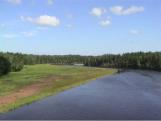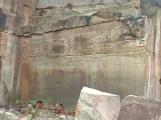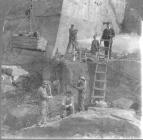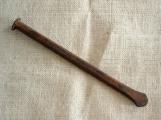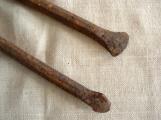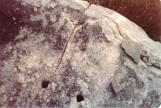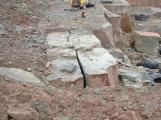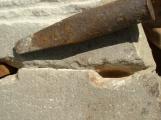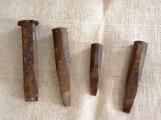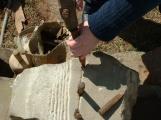1
The dictionary tells us that sandstone is a sedimentary rock composed of sand grains cemented together, as by silica.The Wallace sandstone lies in a natural formation of layers which are usually three to four feet deep. Therefore, the rocks are cut according to the thickness of the layer. In the early years, the workers had to drill and blast the stone out by hand. It took three men to drill a series of holes in the exposed face of the rock. One man would position and hold the drill while the two other men would alternate hammering the drill into the rock with maul hammers. After the holes were drilled and reamed out, powder was placed inside the drill hole and the rock was blasted out of the rock face. Once steam drills were introduced it was quicker for the men to drill the rock. The pieces of rock that the men blasted out were very large and usually had to be cut down to a manageable size. This was done with wedges called gads which split the rock apart. To cut the rock into a specific shape, the men would scribe around a template and then cut the stone into the desired shape.
5
A picture of the village quarry around 1900. Two methods of drilling are shown. In the foreground are three men drilling by hand. In the background is a man on a steam drill.Though there are many safety issues in this picture only three men were killed in the near two hundred years of quarrying.
8
A hand drill and a reamer. The drill was held by one man. Two other men hit it with a maul hammer while the holder turned it.After the hole was drilled a reamer was hammer down the drill hole. The reamer is wider than the drill and as it goes in it inscribes a line on opposite sides of the hole.
When the drill hole is loaded and exploded, these lines aid in the direction of the blast.
